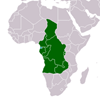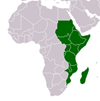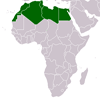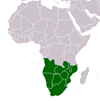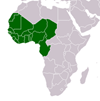Exceptional preservation of children's footprints from a Holocene footprint site in Namibia
Exceptional preservation of children's footprints from a Holocene footprint site in Namibia
Here we report on a Holocene inter-dune site close to Walvis Bay (Namibia) which contains exceptionally well-preserved children's footprints. The footprint surface is dated using Optically Stimulated Luminescence (OSL) methods to approximately 1.5ka. These dates are compared to those obtained at nearby footprint sites and used to verify a model of diachronous footprint surfaces and also add to the archaeological data available for the communities that occupied these near-coastal areas during the Holocene. This model of diachronous footprint surfaces has implications for other soft-sediment footprint sites such as the 1.5Ma old footprints at Ileret (Kenya). The distribution of both human and animal tracks, is consistent with the passage of small flock of small ungulates (probably sheep/goats) followed by a group of approximately 9±2 individuals (children or young adults). Age estimates from the tracks suggest that some of the individuals may have been as young as five years old. Variation in track topology across this sedimentologically uniform surface is explained in terms of variations in gait and weight/stature of the individual print makers and is used to corroborate a model of footprint morphology developed at a nearby site. The significance of the site within the literature on human footprints lies in the quality of the track preservation, their topological variability despite a potentially uniform substrate, and the small size of the tracks, and therefore the inferred young age of the track-makers. The site provides an emotive insight into the life of the track-makers.
CITATION: R. Bennett, Matthew. Exceptional preservation of children's footprints from a Holocene footprint site in Namibia . : Elsevier , 2014. Journal of African Earth Sciences, Vol 97, September 2014, pp. 331-341 - Available at: https://library.au.int/frexceptional-preservation-childrens-footprints-holocene-footprint-site-namibia

